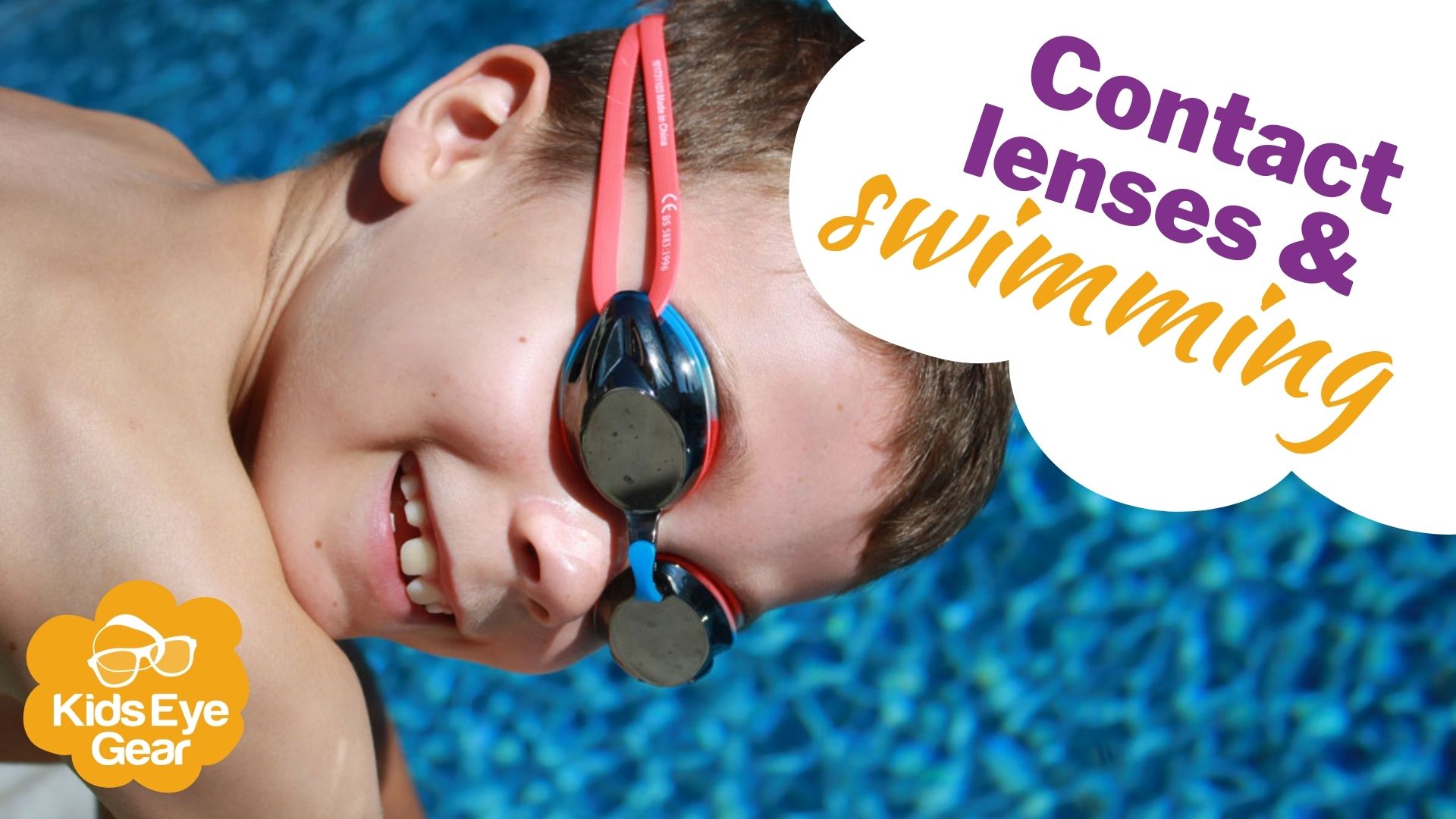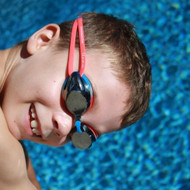Contact Lenses and Swimming
1st Apr 2023

Is it okay to wear contact lenses in water? The pool, at the beach or lake, and even in the shower? These are pretty common topics that pop up in eye sight and vision Facebook groups all the time. So what is the correct protocol for contact lenses and water?
Living near the beach and with two kids that almost live in the pool during Summer, there’s a whole lot of swimming that happens all year round. As you might know from Dane’s story, he wears a rigid gas permeable contact lens just in the one eye. Being in one eye only, we’re fortunate that when goes surfing or swimming we simply take his contact lens out as he can operate with one eye. Not great for his peripheral vision obviously but he gets by.
However, for those that can get by with reduced vision, the general recommendation is that contact lenses should not be left in while swimming. The most obvious reason that contacts should be taken out before hitting the pool is that the lens can be washed out and get lost in the water. But a more serious outcome is the risk of eye infections.
What are the risks of wearing contact lenses in while swimming?
Microbial Keratitis
In a report written by David Stevenson on Microbial Contamination and Contact Lenses, he states that “swimming in contact lenses has been associated with an increased risk of microbial keratitis.” Keratitis is an inflammation of the cornea and can be quite painful.
Acanthamoeba
The report also mentions that the CDC in the United States “specifically associates wearing contact lenses during water sports with Acanthamoeba keratitis and recommends not wearing contact lenses during water sports.” To be honest, my husband and I are petrified of acanthamoeba. Our ophthalmologist has drilled home that this is a scary, scary bug as nothing can kill it. Once it gets in your eye, you have a huge risk of losing vision and the eye. Frighteningly, if acanthamoeba makes its way into your brain or spinal cord (and let’s face it, your eyes are pretty darned close to your brain!) it largely results in death.
What the Professionals Say
The view that contacts should not be worn during water sports is across the board with most eye care and vision specialists, in the US and here in Australia. Most optometrists will not recommend it, while some will say it’s ok under certain stipulations.
Even Specsavers Australia recommends not wearing contacts while swimming, suggesting instead that contact lens wearers opt for a pair of prescription goggles, or invest in a scleral contact, which covers the whole eye, although they can only be worn for a limited time.
Some contact lens companies will suggest wearing disposable contact lenses and throwing them out immediately after swimming. They also suggest wearing goggles while wearing contacts to keep water away from the eye. The information on some of these boxes can be misleading and often goes against what the professionals are saying.
What you can do if you forget to take out your child’s contact lenses
While many people are aware of the risks involved in swimming with contacts, that doesn’t seem to be enough to keep them from doing it anyway. In fact, 60% of contact wearers will go ahead and wear their lenses in the water, according to the report by Stevenson.
Unfortunately, we can drill our rules into our kid’s head as much as we want, but when they are at the pool or at the beach, they won’t always stop and remember. And let’s face it, if you have a kid with substantial vision impairment without contact lenses, it can be pretty difficult to go without their contacts.
If you or your child forget to take out their contacts before swimming, don’t panic. Take them out as soon as possible. Either dispose of them or disinfect with appropriate contact solution. Flush the eyes with fresh water.
To be extra safe, contact your eye care professional to make sure they are happy with what you’ve done as they may want to check up on your child’s eyes. Keep an eye out for redness of your child’s eye and get them to the doctor if any eye infection symptoms emerge.
What if my kid can’t see without contact lenses?
Well this definitely makes things a lot harder.
Having a child with bilateral contacts would be so much more difficult than just having the one eye require a contact lens. One of our adult friends actually leaves his contact lenses in when he surfs because his vision is so bad that he simply can’t see without them and has no other choice.
Prescription goggles might be a great investment, especially if your child loves the water as much as mine.
Failing that, have a chat with your eye care professional about your options.
Eye infections are not fun for kids or adults.
Special care needs to be remembered with contact lens care. Following the suggestions of the CDC is important in protecting our kid’s little eyes. As the Stevenson report says, “avoiding swimming in contact lenses is clearly the best method of avoiding risk of microbial keratitis.” Where that isn’t possible, the report says that the use of goggles as a barrier is highly suggested.
So absolutely enjoy the water but if your child is a contact lens wearer like mine, just be sure you’re aware of all the risks and take appropriate actions to minimise them.

